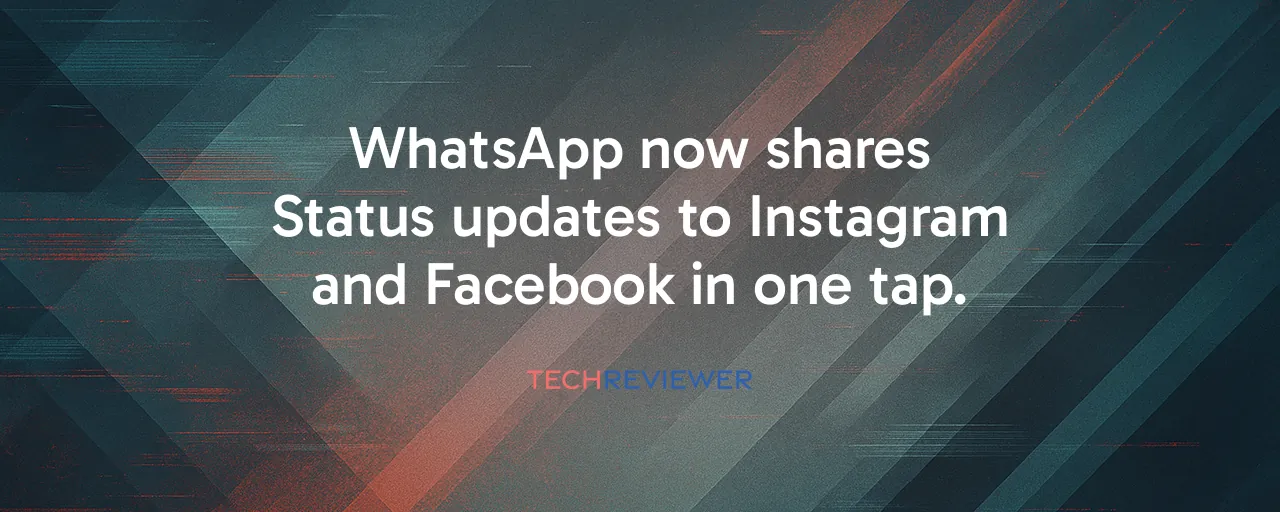Streamlining Social Sharing
WhatsApp's latest Status update, rolled out to iOS beta users in October 2025, changes how people share fleeting moments. With a sleek redesign mimicking Instagram Stories, it introduces one-tap cross-posting to Facebook and Instagram. No more clunky menus or multi-step processes; a single button now syncs your Status across Meta's platforms. For the 1.5 billion users who check WhatsApp's Updates tab daily, this shift promises a smoother way to stay connected across their social apps.
The redesign aligns with Meta's vision to weave its apps into a cohesive ecosystem. By integrating with the Accounts Center, launched in 2020 and expanded to WhatsApp in January 2025, users can choose which platforms see their posts. This flexibility caters to those who juggle multiple audiences, from close contacts on WhatsApp to broader followers on Instagram. Yet, the optional linking ensures privacy-conscious users aren't forced to merge their digital lives.
Balancing Convenience With Control
For many, the appeal lies in efficiency. Take a small business owner in Brazil, where WhatsApp dominates communication. They can now share a promotional Status to their 500 contacts and, with one tap, post it to their 10,000 Instagram followers, saving time and effort. Data from 2025 shows 3 billion people use WhatsApp globally, and this update taps into that massive base to amplify reach without extra work.
Privacy advocates, however, raise valid concerns. While Meta assures that end-to-end encryption for messages remains untouched, linking accounts could lead to more behavioral tracking across platforms. The company counters this by making account integration optional, letting users decide their level of connectivity. This balance addresses fears of data overreach while offering tools for those who prioritize convenience.
Lessons From Creators and Competitors
Content creators, especially in the 24-billion-dollar influencer marketing space, see this as a game-changer for workflow. An influencer in India, for instance, can post a sponsored Status and share it instantly to Instagram and Facebook, reaching diverse audiences without repetitive uploads. This efficiency mirrors Instagram's 2016 Stories launch, which overtook Snapchat's user base in just eight months by leveraging Meta's massive network. The lesson? Streamlined features backed by a huge user base can shift industry dynamics fast.
Competitors like Telegram and Signal face new pressure. WhatsApp's shift toward social media functionality, blending messaging with ephemeral content, makes it harder for rivals to stand out. Telegram's focus on privacy and Signal's encryption-first approach may appeal to niche audiences, but WhatsApp's 3 billion users and new creative tools, like music integration and photo collages, broaden its appeal. The takeaway is clear: platforms must evolve beyond core functions to stay relevant.
A Glimpse Into Meta's Strategy
Meta's broader plan comes into focus with this update. By unifying interfaces across WhatsApp, Instagram, and Facebook, the company reduces friction for users switching between apps. The redesigned Status, with view counts now on the left and quick-share buttons below posts, feels familiar to Instagram users, easing adoption. This move also sets the stage for WhatsApp's 2025 advertising push, with Status ads offering businesses new ways to reach customers.
Yet, challenges loom. Regulatory bodies, like the EU's competition authorities, are watching Meta's integration efforts closely for antitrust issues. Users wary of Meta's past privacy missteps, like the Cambridge Analytica scandal, may hesitate to link accounts. Still, the optional nature of cross-posting and clear privacy controls show Meta's attempt to thread the needle between innovation and trust.
What This Means for Users
For everyday users, the redesign simplifies sharing while keeping choices intact. Whether you're a creator reaching millions or a small business connecting with local customers, the one-tap feature cuts down on digital busywork. But it also raises questions about platform overlap. As WhatsApp starts to feel more like Instagram, will its unique messaging-first identity blur? Some users might love the convenience, while others might miss the distinct vibe of each app.
The bigger picture is about connection. WhatsApp's evolution reflects a world where people want to share widely but selectively, with tools that make it easy yet secure. As Meta refines this balance, users get a front-row seat to a social media landscape that's increasingly interconnected, for better or worse.
